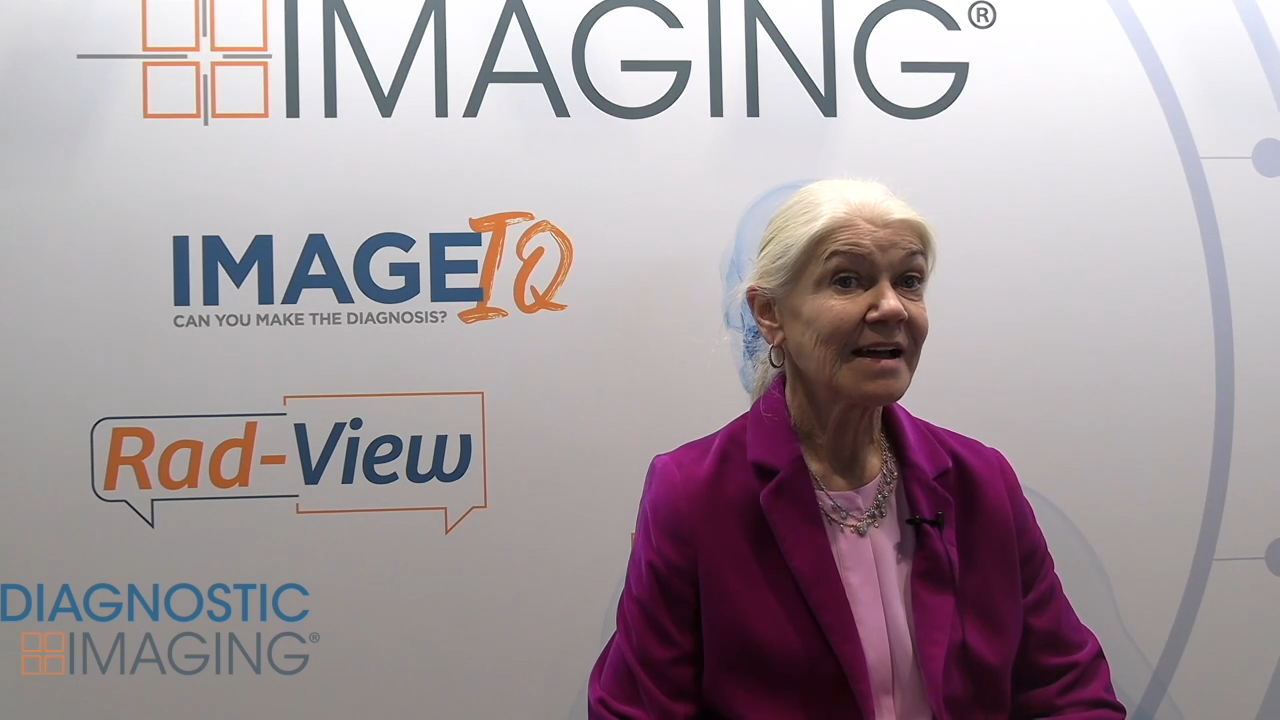RSNA 2016: Coming as One for Imaging Informatics and Services
The focus of the big three vendors at RSNA 2016.
The Windy City wasn't at all windy this year, not even cold or snowy for that matter, but RSNA-goers could feel the winds of change blow on the McCormick technical exhibits floor. The transformation of the medical imaging industry is wide and deep, especially in the re-organization of the big vendors.
Informatics + Services as a Recipe for Value Creation
As part of an ongoing trend of the last several years, imaging informatics continued to claim an ever higher footprint of the RSNA 2016 showfloor. Imaging informatics solutions, as providers already know well, provide cost-effective ways of getting more value out of capital imaging equipment investments. They are essential in helping expand imaging service lines or the reach of imaging services, and the efficiency of both. Now, informatics is joined in this momentum by professional value-adding services. The parallel between the Big Three medical imaging vendors is striking. For each of GE Healthcare, Siemens Healthineers, and Philips Healthcare, imaging informatics and professional services have never stood as close to one another before. While the synergies between the two business lines have always existed, in 2016 we can start talking about real, game-changing convergence.[[{"type":"media","view_mode":"media_crop","fid":"54955","attributes":{"alt":"","class":"media-image media-image-right","id":"media_crop_1861679419818","media_crop_h":"0","media_crop_image_style":"-1","media_crop_instance":"6879","media_crop_rotate":"0","media_crop_scale_h":"0","media_crop_scale_w":"0","media_crop_w":"0","media_crop_x":"0","media_crop_y":"0","style":"height: 200px; width: 200px; border-width: 0px; border-style: solid; margin: 1px; float: right;","title":"In the Philips Healthcare booth, the section highlighting the latest additions to the enterprise imaging IT portfolio (IntelliSpace Portal 9.0, Universal Data Manager, Illumeo), was the same section where PerformanceBridge software and services were demonstrated.","typeof":"foaf:Image"}}]]
This convergence of imaging informatics and professional services is probably least of a novelty in the case of Philips. In the U.S., this can be dated back to the launch of its “Healthcare Transformation Services” consulting practice in 2013. In addition, the vendor has, at least in the U.S. market, a stronger legacy of managed imaging IT services compared to its two top competitors. In radiology PACS for example, Philips has pursued this deployment model in a significant portion of its installed base ever since the acquisition of Stentor in 2005. Similarly on the equipment side, the vendor has been enjoying an early-mover advantage with regard to large-scale managed equipment services (MES) models. There is not one corner of the globe where Philips has not yet engaged with hospital chains into long-term MES-type partnerships, with contracts valued in the tens, if not hundreds of millions.
The Informatics and Services Pair at Center Stage of Booth Design
RSNA 2016 marks the year when Philips made significant additional steps in this direction, notably with the launch of PerformanceBridge, a new suite of performance management software and services. The ‘Powered by HealthSuite’ label means the health care cloud strategy of Philips, which made its initial steps outside of the acute care setting, now has a solid entry into radiology. It also shows Philips has been able to ‘productize’ around its advisory and analytics services, which have been the cornerstone of its large managed services contracts.
For both Siemens and GE, however, the convergence of informatics and services is more recent, and no less than transformational for these two vendors who dominate the U.S. market from a modality sales volume standpoint.
Enter the Transformation of Siemens Healthineers and GE Healthcare
Siemens has been quite interesting to watch it restructure the organization of its professional services arm throughout 2016. This massive endeavor has been taking place concurrently with the re-branding effort from “Healthcare” to “Healthineers”, which shows the extent to which the new services structure is very much inherent to the future that Siemens Healthineers sees for itself as a stand-alone health care company. Siemens can now articulate very elegantly its value proposition around three service pillars. “Customer Services” keep the lights on for its customers; no major change on that front. The “Digital Services” segment, however, now groups the imaging informatics portfolio together with several value-adding services, while the “Enterprise Services” line is tasked to develop the two into new business models such as multi-vendor and managed services.
Along the same lines, GE Healthcare's “Digital Health Services” and GE Digital’s “Customer Success Services” lines leverage informatics solutions in a big way. The latter range provides a range of advisory, managed, implementation, and education services that, take advantage of the Predix Internet of Things approach, which is originally industry-agnostic, and applying it to medical equipment and health care. These are some of the tools that are now in the hands of GE’s sales organization, from regular account managers to GE Healthcare Partners for strategic accounts, to elevate the company from selling ‘boxes’ and associated services, to selling ‘solutions’, to selling ‘outcomes’. By ramping up the value proposition to the C-suite, partly through the acquisition of the Camden Group in November 2015, 2016 marks a turning point for GE Healthcare’s market strategy.
Analytics-as-a-Service: A Lever for Services and Door Opener to the C-Suite
This transformation of the Big Three is actually dictated by the changes in their customer bases. By some accounts, the seemingly unstoppable consolidation in the U.S. health care provider market will soon leave no more than 600 institutional purchasing entities (integrated delivery networks, health systems, etc.) to sell into on the hospital side. It is also safe to assume that capital purchase decisions for medical imaging equipment in these increasingly large entities will be made to a large extent in the highest management spheres. And to the nonclinical stakeholders among them, their interest is more on the side of managing and optimizing their capital assets and fleets, than in the bells and whistles of imaging equipment.
In this context, the convergence of informatics and services means a lot more to the vendors than merely developing a stronger play in IT-as-a-service. Analytics-as-a-service, for instance, is a crucial internal asset for them to position as partners to their customers in helping them deliver value-based care. Indeed, as their influence on capital investments continues to grow, C-level decision-makers are demanding a stronger tie-in between their imaging investments and the institutional outcomes that determine their financial risk and value-based payments under accountable care organizations. In the customer-centric sales approach that they are now developing beyond their “key accounts” and the limits of their own installed bases, modality equipment sales-people only come in as second-line to account managers and advisors, and multi-vendor service (MVS) neutrality is crucial.
Imaging Analytics Dashboards: the Vendor Race is On
GE Healthcare’s build-up in the breadth and depth of the operational, financial, and clinical modules in the GE Health Cloud powered by Predix, is quite impressive to say the least. Reportedly, the nine in-house modules pertaining to radiology that GE demoed at RSNA 2016 are mature and ready-to-market. GE’s openness to engage with third-party independent software vendors contrasts with Siemens’s approach, which prides itself on building teamplay onto a single, in-house developed platform. Given its freemium model and easy deployment through the Microsoft Azure cloud, teamplay is shaping up nicely as well as it continues to gain global footprint.
More than 400 accountable care organizations (ACO’s) are taking on financial risk, passing it on to providers who, in turn, are engaging radiology under shared-risk contracts. Accountable care is trickling down to what can be dubbed ‘accountable imaging’. As this happens, there is no doubt that the analytics capabilities of imaging equipment vendors, and the value-adding services that stem from them, will become more and more of a differentiating factor in the competitive race.
Can MRI-Based AI Bolster Biopsy Decision-Making in PI-RADS 3 Cases?
December 9th 2024In patients with PI-RADS 3 lesion assessments, the combination of AI and prostate-specific antigen density (PSAD) level achieved a 78 percent sensitivity and 93 percent negative predictive value for clinically significant prostate cancer (csPCa), according to research presented at the Radiological Society of North American (RSNA) conference.
The Reading Room: Artificial Intelligence: What RSNA 2020 Offered, and What 2021 Could Bring
December 5th 2020Nina Kottler, M.D., chief medical officer of AI at Radiology Partners, discusses, during RSNA 2020, what new developments the annual meeting provided about these technologies, sessions to access, and what to expect in the coming year.
RSNA 2020: Addressing Healthcare Disparities and Access to Care
December 4th 2020Rich Heller, M.D., with Radiology Partners, and Lucy Spalluto, M.D., with Vanderbilt University School of Medicine, discuss the highlights of their RSNA 2020 session on health disparities, focusing on the underlying factors and challenges radiologists face to providing greater access to care.
New Interventional Radiology Research Shows Merits of Genicular Artery Embolization for Knee OA
December 3rd 2024In a cohort of over 160 patients with knee osteoarthritis (OA), including grade 4 in nearly half of the cases, genicular artery embolization led to an 87 percent improvement in the quality of life index, according to research presented at the recent RSNA conference.
Siemens Healthineers Debuts New Photon-Counting CT Systems at RSNA
December 2nd 2024Debuting at the Radiological Society of North American (RSNA) conference, the new photon-counting computed tomography (PPCT) scanners Naeotom Alpha.Pro and Naeotom Alpha.Prime reportedly combine rapid scan times with high-resolution precision.










